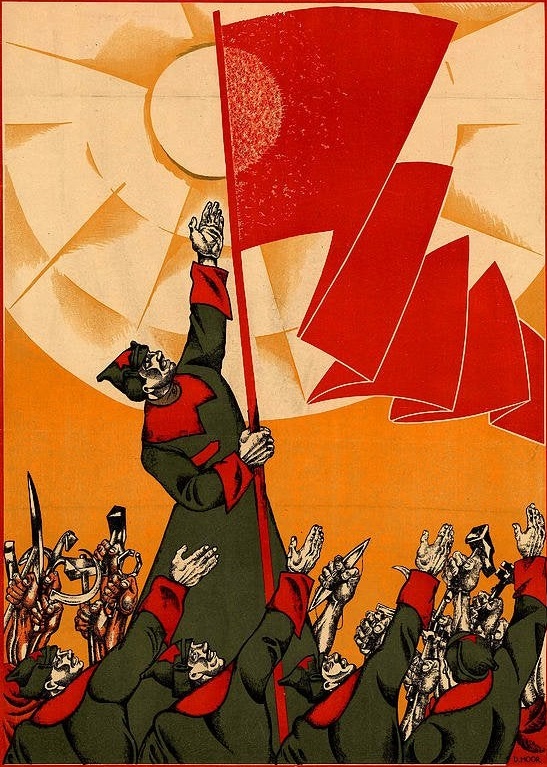It’s surprising that pagan religions of Europe have disappeared, but polytheistic religions of Asia (especially India) survived and are still widely followed there. Why?
One factor is that paganism is tolerant of adding additional gods, practices, or beliefs to your mix. From a pagan standpoint, adding in Christianity wasn’t a big deal, but Christianity was not similarly tolerant, they weren’t cool with you keeping your pagan gods. Plus their belief system had the threat of eternal damnation and the promise of heaven to motivate you.
Christianity
Within the Roman Empire, Christianity ended up succeeding as the apocalypse cult within the empire, with Rome eventually foresaking the old gods for Jesus.
As Roman retreated, Rome’s church survived and became a unifying force in Europe. While there were crusades, there were also cases of willing conversion in order for border nations to gain access to the European market and diplomacy.
The fucking inquisiton
No no, not the comfy chair!
The crusades targeted all religions that weren’t nicene christian and they were especially cruel if you were christian but not nicene.
Lookup the history behind the Dominican order if you want more gory details
It’s because Christianity incorporated a lot of pagan rituals into Christianity and some pagan gods became catholic saints.
Also there are less know crusades against pagans.
I was gonna say also because paganism was heresy and would get you tortured to death?
And then they started the murdering.
Besides the other reasons mentioned here, i think there is a strong factor in the social and intellectual sphere. Christianity was a cohesive standardized institution with a written holy book (or set of texts, before the council where they canonized which books would go to the bible), and later became a part of enforced state policy. That mixture of standardization and officialdom allowed it to essentially accumulate ‘capital’ to such a degree it could (after absorbing lots of ideas and practices) overwhelm the local polytheistic societies and religions.
Local polytheistic religions were extremely varied, and each village tribe or city had its own gods, beliefs, etc. The mess of beliefs meant that the religions spread organically, not in an institution with quasi industrial ways (standardized beliefs, practices, texts, even rows of clergy trained in the same ways on churches and monasteries). They could be challenged and be overwhelmed by the bigger faith, in intellectual ways (evangelization) or by demographic superiority. Or just by immigration to other regions (which many people did, like the barbarians in late Rome or Imperial legions and soldiers since always), where multiple contradictory faiths coexisted, until a cohesive unified alternative popularized.
All that is inverted in India. Hinduism was (is) varied, but way less than paganism from ireland to iran, and it is a formalized institution with written holy texts supported by the state (or by castes, specially the Brahmins), very constant and stable over many generations. That inertia even allowed it to not become muslim majority (except in a few regions).
Other countries in Asia actually have Buddhism as the main religion or state religion (or main historical religion). Even if buddhism absorbs lots of pagan deities, ideas and praxis, the core institution is solid and formalized, and dominant. Japanese Shinto is very different from pre buddhist times. China had buddhism, and confucianism and taoism as also very standardized formalized state institutions (aka not a different religion per village). So asian polytheism is very reduced compared to european one.
“Hinduism” as a religion erases the unique folk identities in India. It is a lazy, colonialist way to group an entire subcontinent with a stereotypical, uniform religion.
Religious syncretism in India is a very visible and real thing - not just for “Hinduism”, but also other religions in India. Casteism, on the other hand, is a effect of Brahminism - meaning that not every place in India has the codified chaturvarna (quad-caste) system - especially in the South of India, where’s there’s an incomplete caste system, comprising of Brahmin-Shudra inside, and Dalit/Tribal outside, as opposed to the Brahmin-Kshatriya-Vaishya-Shudra inside and Dalit/Tribal outside classification. In fact, there have been multiple anti-casteist movement before, like the Nath (started from my mother land), Lingayat movement (in mainland Karnataka), the Bhakti movement (somewhere in Tamil Nadu), the Adi-Dharma (in Punjab) and the Arya Samaj movement (around colonial era in Bengal) - there’s more of them, but I can only remember these.
That inertia even allowed it to not become muslim majority.
Not really - there were repeated Islamic invasions aimed to chip the wealth. Religious conversion, however, was a secondary thought. Matter of fact, there was no need for Muslims to convert Hindus in central India, because rulers did not act over religion, but over power. Many Muslim leaders in the North of India had Hindu officials in their court, they also married and did not convert their wives to Muslim, and vice versa. In fact, there’s also a case of a homosexual Muslim ruler called Alauddin Khilji, who had a relationship with his slave Mallik Kafur. Mubarak Shah, son of Alauddin Khilji, also had a male lover called Khusrau Khan. In fact, it was also advantageous for the Muslims to impose jizyah and kharaj tax.
In the place that I am from, which is the south of India, there’s a temple that is often visited by Muslims, which would probably be frowned upon by Muslims from Arab. In fact, these Muslims also take part in animistic rituals - remember how I said that “Hinduism” is a colonialist term? Yes, Tulu-folkism is what is practiced in my motherland, and Brahmins have no control over these rituals - it is the tribal groups Koragas, who organize prayers for the Shudra groups in Tulu Nadu. In the north of India, Sufism, which is a type of mystical Islamism, is the very opposite of radical Islam, and in fact, was open to the idea of “many paths, one Gods”.
temple that is often visited by Muslims
Sabarimala?
No, this temple is in Tulu Nadu. Since you’re a Malayali, you must know about Bappa Beary, a Muslim trader from Kerala?
The temple built by him is called the Bappanadu temple. It is not only a Hindu temple, but also a Tulu folk-religion temple for Koragajja (Koraga + ajja), and also a Durga temple, I think. Bappa’s descendants are still invited to the ceremony, even to this day.
I know that Tulu Nadu is now a bastion for the BJP/Bajrang Dal/RSS ecosystem thanks to sanskritisation, but this was not the case 40 years ago.
About Sabarimala, I don’t remember properly, but our family head was supposed to refrain from eating meat, wear a black lungi and plan a long-distance pilgrimage to Sabarimala to pay visit to the celibate God Ayyappa. I’ve been told that he had a lowly birth, and that Brahmins are trying to appropriate this God too - this information might be incorrect though.
Roman empire prosecuted Pagans in later eras in same way they prosecuted Christians in earlier eras. All countries in the Roman empire were dominantly Christian.
Asians were not part of Roman empire (neither did Arab for that matter) so they maintained paganism until eventually Islam eliminated from Arab region and so only Asia survived
I think a major factor was the Hellenistic age (the spread of Greek culture from the Mediterranean to Central Asia after Alexander the Great) and the “interpretatio graeca”—the practice of the Greeks (and later Romans) of merging their own polytheism with the various other forms of polytheism they encountered in the Hellenistic world. The result was that everyone from the Celts and Germans in western Europe to the Egyptians and Iranian polytheists in the Near East (but not the non-polytheistic Jews or Zoroastrians) could be assimilated into Greco-Roman culture without formally giving up their religions. But a side effect was that all religious institutions were assimilated into the state, so that when the state switched to monotheism there were no independent religious institutions to oppose it.
Because christians literally forcibly converted everyone they could, and killed anyone who refused. Also it didnt die completely. Most people just worshipped in secret, and in some more rural areas it survived. Aswell as mixing with the christians culture and influencing them. Like Santa Claus is just Odin. A lot of Jesus’s associations came from Apollo because Apollo was super popular in the roman empire and had lots of temples and when the romans converted them to churches a lot of the preists were like ok well im a preist of apollo thats what i know how to do so ill just keep doing what i always did but say jesus now instead. Laurel wreath on head, frankincense, etc. All Apollo things.
Most holidays trace their roots back pre-christian too. Christmas, Halloween, Easter, all can be traced back to old pagan traditions.
A big part of like christianity in general is converting others. Not all religions are like that most arent actually not even all christian sects are. Its why it spread so far cuz people who follow it actively try to spread it. Even today religious christian groups travel around the world trying to convert people. In areas they colonized they did the same, convert, or die tactics.
Pagan remnants are attested in Poland as late as in XVI century for example. Also compare to christian persecution in Japan, even after over 200 years some secret pockets of christianity still remained and emerged when the antichristian edicts were liquidated during Meiji era. European pagans lasted 600+ but it wasn’t enough.
The Sami people still exist and are pagan today in scandinavia.
Most Sami are either lutheran or orthodox. Their paganism still do exist in minority but it’s because they live on absolute periphery of Europe and while they were never christianised by force by organised state action, even the private effort of Norwegian evangelists almost wiped it out in XVIII century.
Ya theyve been persecuted a lot as an ethnic minority too im just pointing out there are still pagan Samis around today




